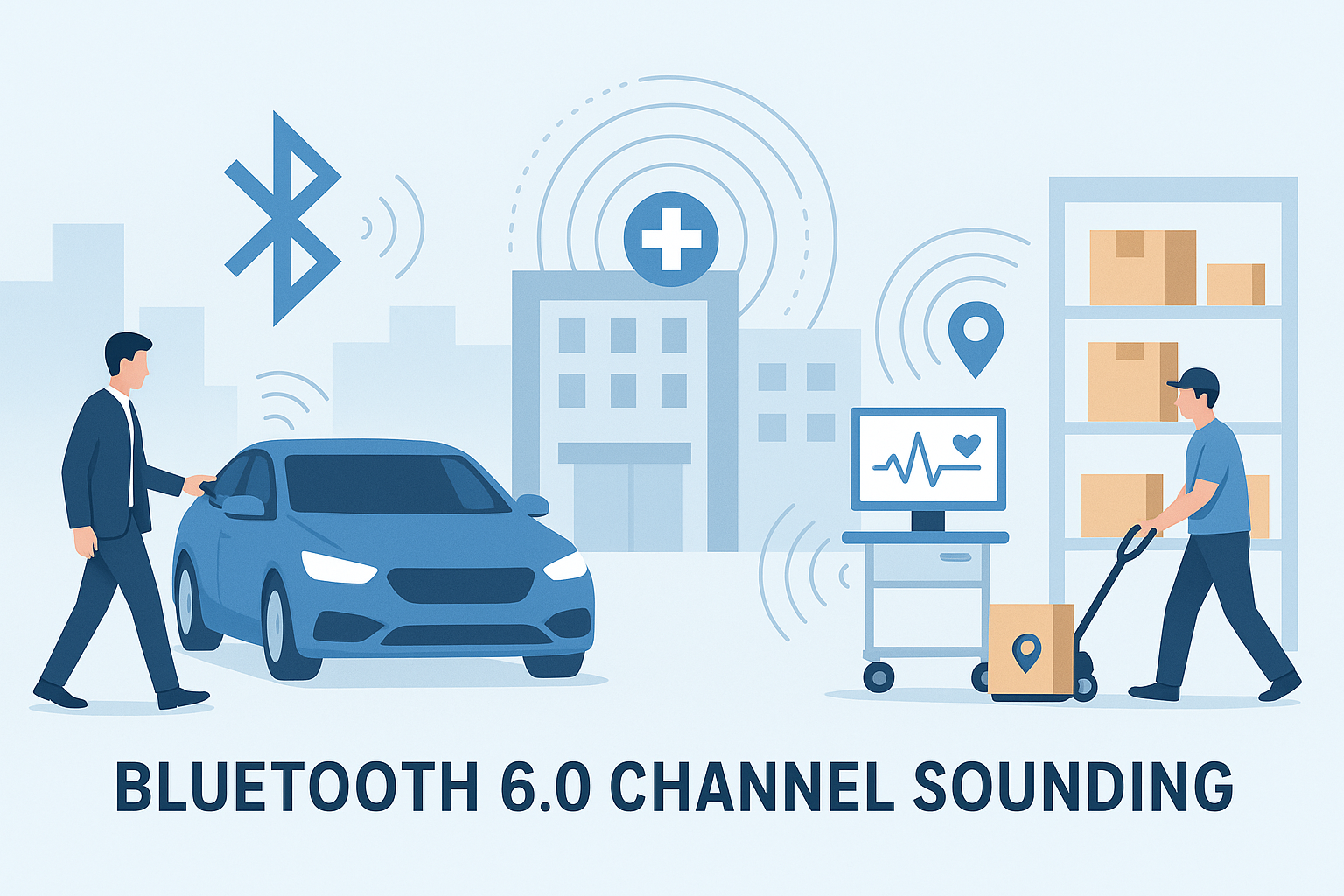
Imagine walking up to your car and having it unlock only when you are exactly close enough. Or a hospital that can instantly locate critical medical equipment down to the centimeter. Or a warehouse where assets are mapped and tracked in real time. These aren’t futuristic visions anymore. They’re powered by Bluetooth 6.0 Channel Sounding (CS), the latest evolution of the world’s most widely adopted short-range wireless technology.
While UWB (Ultra-Wideband) has dominated headlines for its centimeter-level accuracy and robust security, Bluetooth has something new up its sleeve. By introducing channel sounding, Bluetooth is closing the gap by unlocking true fine-ranging capability without the need for additional radios.
What Exactly Is Channel Sounding?
At its core, Bluetooth CS is about measuring distance with far more precision than older BLE techniques like RSSI or even Direction Finding. Instead of just estimating proximity, CS employs two methods together:
- Phase-Based Ranging (PBR): Calculates distance by analyzing the phase difference between transmitted and received signals.
- Round-Trip Time (RTT): Measures the signal’s time of flight, i.e., how long it takes to travel between devices.
When combined, PBR and RTT deliver centimeter-level distance accuracy—turning Bluetooth from “close enough” into “pinpoint precise.” Devices can measure ranges up to 150 meters, using between one and four antennas per side depending on the accuracy and power trade-offs required.
Security First: Why CS Is Harder to Fool
Location accuracy is only half the story, security is the other. Bluetooth CS incorporates a series of safeguards against relay and man-in-the-middle attacks:
- DRBG (Distributed Random Bit Generator) randomizes channel usage.
- Data encryption ensures exchanged ranging information can’t be manipulated.
- NADM (Normalized Attack Detector Metric) helps detect suspicious inconsistencies.
- And finally, cross-checking PBR and RTT results makes spoofing far harder.
This matters most for proximity-based systems like smart locks, keyless car entry, or access control, where attackers might try to trick a lock into thinking you’re nearby. With CS, those attacks become exponentially more difficult.
Why It’s a Game-Changer for Developers
Unlike UWB, which often requires dedicated hardware, Bluetooth CS is built into the devices people already carry—smartphones, laptops, tablets. That means developers can launch location-based services without adding new radios, reducing cost and speeding up adoption.
Applications split into two main categories:
- Localization & “Find My” services: Track personal items, warehouse assets, or medical equipment in real time.
- Proximity Awareness: Enable smarter, safer access control for vehicles, homes, and industrial systems.
But it doesn’t stop there. From geofencing and human-machine interfaces (HMI) to smart home automation, CS unlocks richer context awareness in everyday interactions.
Bluetooth 6.0 Ecosystem: Already Taking Shape
Released in September 2024, Bluetooth 6.0 brings CS as an optional—but highly anticipated—feature. Major semiconductor players are already on board:
- Nordic Semiconductor’s nRF54L15 SoCs are its first with CS support, paired with qualified host/controller software in the Nordic SDK.
- NXP’s MCX W72 and KW47 families will target industrial IoT and automotive, with tool support from the MCUXpresso Developer Experience.
And because CS is now a standardized Bluetooth feature, devices will be interoperable through Bluetooth’s qualification program. Developers can trust their solutions will work across platforms.
Practical Notes for Designers
There are still some choices and trade-offs:
- Optional feature: Not every Bluetooth 6.0 device will support CS (at least initially).
- Antenna count vs. power: More antennas mean higher accuracy but greater energy consumption.
- Distance calculation: While the framework is standardized, developers must implement or adapt algorithms themselves—though only one device in a pair needs to handle the computation.
For guidance, engineers can turn to manufacturers offering algorithm access or reach out to our technical engineers for integration support.
Beyond UWB: A New Era of Positioning
For years, UWB has been the benchmark for high-accuracy indoor positioning. Now, Bluetooth 6.0 Channel Sounding brings comparable precision without requiring new radios in end-user devices. With the technology already present in billions of smartphones and IoT devices, the path to mass adoption is much shorter.
Bluetooth CS doesn’t just refine Bluetooth, it redefines what’s possible with wireless connectivity. From secure keyless entry to asset tracking across industries, it sets the stage for the next wave of indoor positioning systems. And in a world where location awareness is becoming a cornerstone of user experience, that makes CS a breakthrough worth watching.